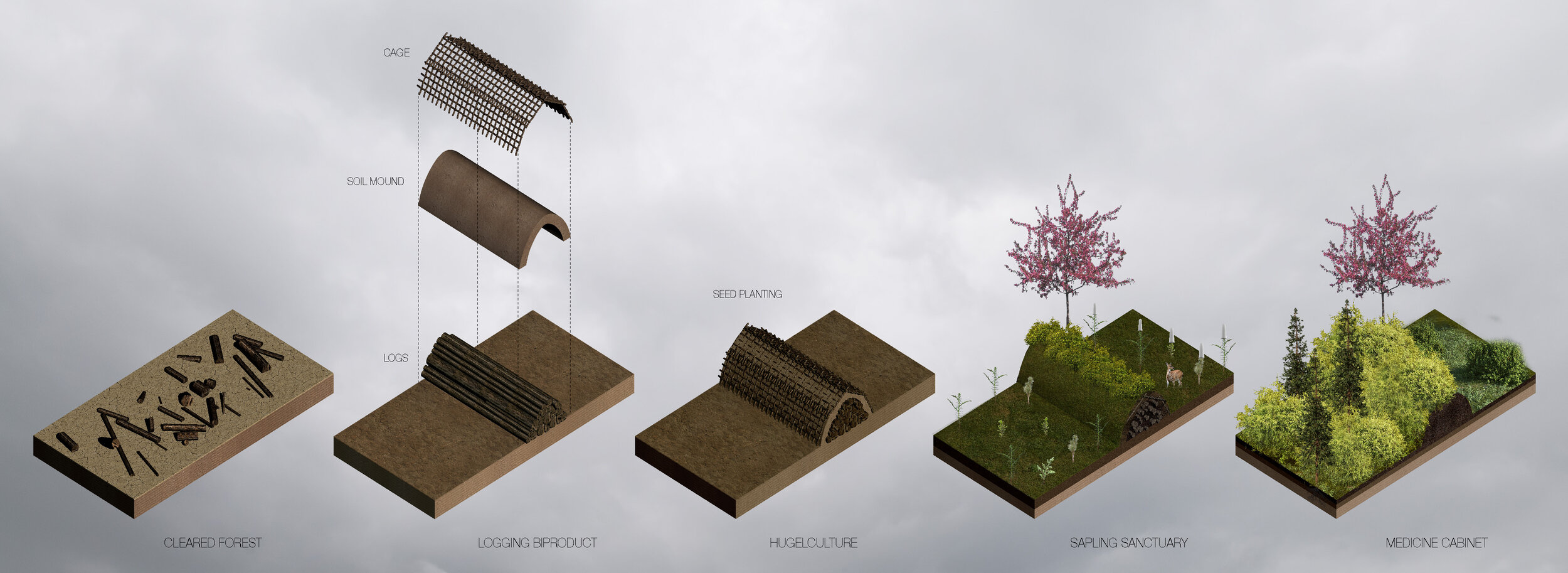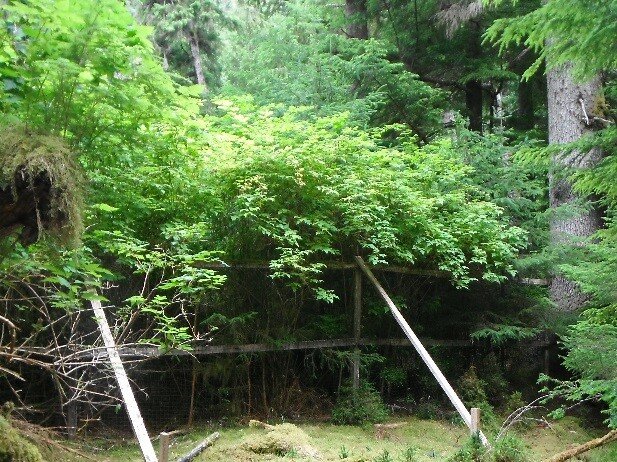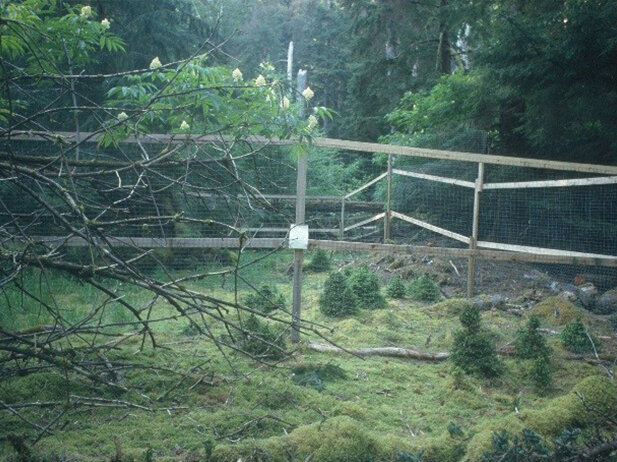Llgaay gwii sdiihlda: Restoring Balance Project
Graham Island in Haida Gwaii is pockmarked with landscars from resource extraction. Since time immemorial these forests were ecologically and respectfully managed; the Haida use cedar from birth until death, yet do not take any more than what is needed. With the introduction of private property and commoditization of land from colonialism, large tracts of Graham Island are faced with cyclical destruction. Clear cutting not only violates the physical beauty of the land, it is directly responsible for the loss of fish and other wildlife habitat, landslides, and destruction of the fabric of Haida spirituality and culture.
How can we reimagine these clearings with new ecological and spatially creative strategies so that their benefits outweigh monetary incentives?
The Sitka black-tailed deer were originally brought to Haida Gwaii by European settlers in the late 1800s for recreational hunting and to provide game meat. With the abundance of plants, mild winters, and the absence of predator in the archipelago, the population of this invasive species increased rapidly from 39 individuals to over 200,000 and decimated over 150 species of native plants, vital to the forest ecosystem and the people of Haida nation.
Deers browses the under-stories of the forest, which includes young tree sapling- suppressing tree growth and thus makes it hard for forest ecosystem to regenerate. A dense ground cover of native vegetation provides food and home to native invertebrate, birds, and small mammals population. It also protects the soil from drying and erosion. The Haida called the forest understory “The Medicine Cabinet”, because forest understory are where most medicine for life are found.
To demonstrate how forest cover changes over time in the absence of browsing, a fenced enclosure erected in Kunga island in 1998. A few years later, The exclosure is packed with ferns, berry bushes, shrubs, and small trees, a hint of what the understory in this old-growth forest once looked like while the area o utside of the enclosure where deers live remained bare. This evidence kickstarted the Llgaay gwii sdiihlda: Restoring Balance Project: an ongoing ecological restoration effort in Haida Gwaii initiated to restore the natural and cultural plant species decimated by over a century of deer browsing. The goal of this project is to eradicate the invasive Sitka Black-tailed deer in all the islands in Haida Gwaii.
Our project was proposed to be an addition to action plans to eradicate invasive deer population of Llgaay gwii sdiihlda Project
The Kunga plant enclosure in 2016. © Parks Canada
The Kunga plant enclosure in 1998, © RGIS.

Only 20% of the tree biomass (largest part of tree trunk) are utilized by the lumber industry. The remaining 80% are left on site as waste.
Hugelkultur means hill culture/mound in German, is a permaculture method where logs are arranged in mounds to function as a raised bed. This method allow constant nourishment of the soil from slowly decaying logs Composting logs produces heat which allows longer growing season and will eventually turn into nutrient rich soil. This arrangement prevents soil erosion and simultaneously retain water in soil. Rearranging logging waste into hugel mounds could assist forest regeneration to areas impacted by logging.
At the same time, these mounds could act as a barrier preventing deer from entering reforested area. Without deers, smaller plants and young sapling can grow and regenerate the forest understory vital to the health of the entire forest ecosystem. Medicine cabinet are once filled again. Soil are rehabilitated because of permaculture. Logging waste can be beneficial for growth again. Giving a chance for trees to complete their circle of life: giving life to the young ones.



